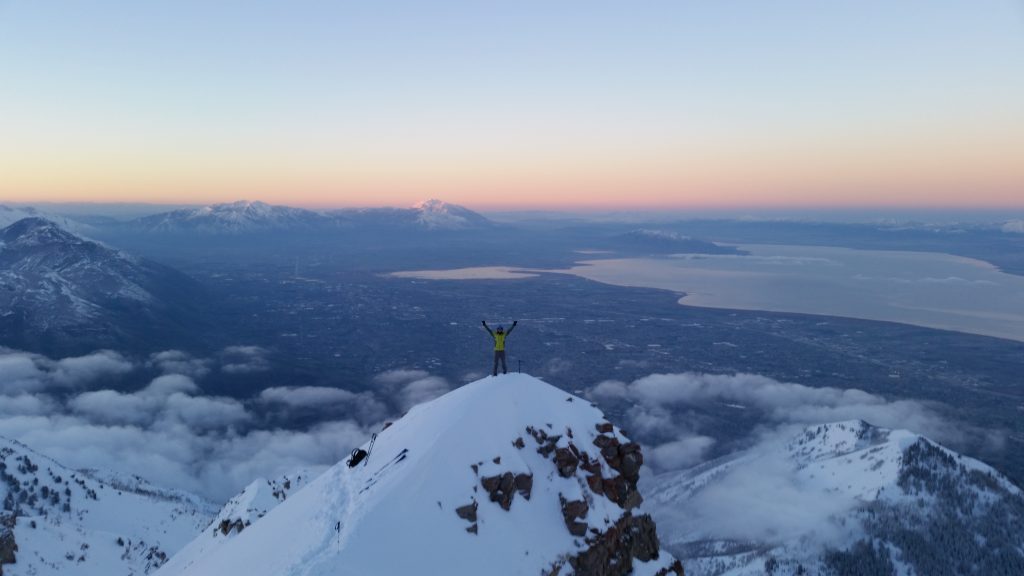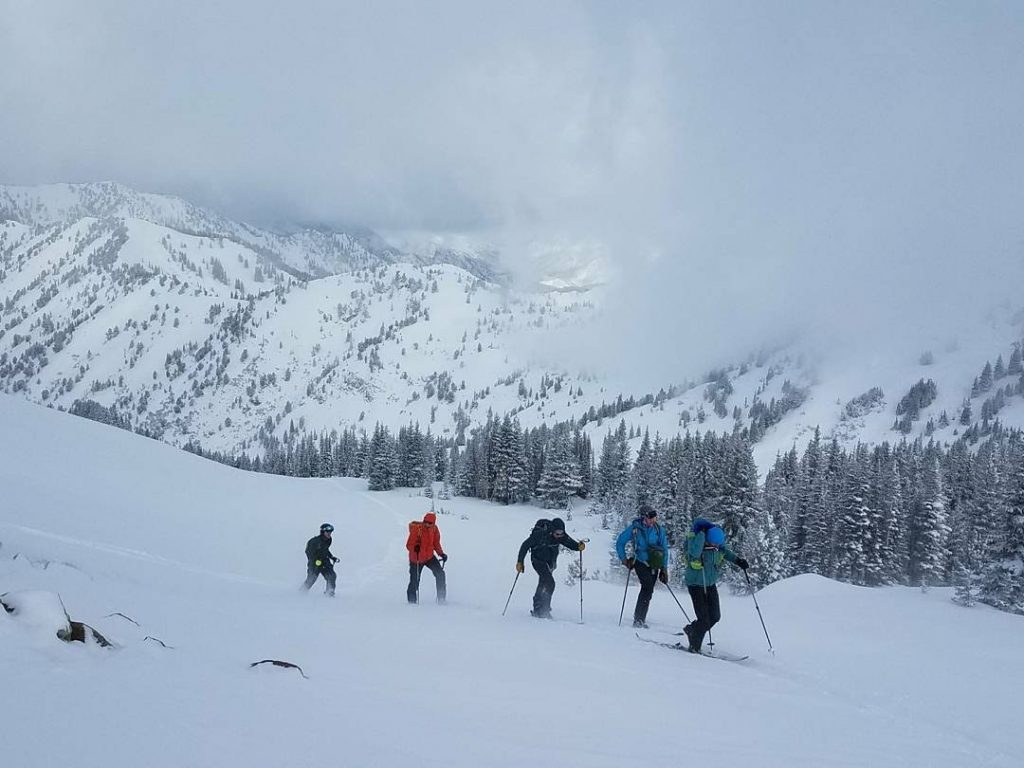
The mountain is peaceful and quiet. There are no lift lines. Physical fitness and skill are the only barriers to how fast and how many laps one skis. This is why BYU student Jackson Chandler loves backcountry skiing.
Chandler originally got into backcountry skiing three years ago during his first semester at BYU, when he didn’t have a car or the budget to ski at a resort.
“I bought some skis at (Deseret Industries) and hiked up Rock Canyon … after learning how to ski in Rock Canyon, my first priority was learning about snow safety and staying alive in avalanche terrain,” Chandler said.
Chandler took a class on avalanche safety and went with other experienced backcountry skiers to learn how to lessen avalanche risk.
Chandler skied down Mount Timpanogos last spring. He started hiking around 2 a.m. in order to climb and ski down in time for class the next day.
“We monitored the avalanche reports and forecasts; examined snowpack; and looked for indicators on instability like wind loading, recent avalanches, or similar slopes and aspects,” Chandler said.

The safety measures Chandler and his friends took are right on point with advice from Mark Staples, director of the Forest Service Utah Avalanche Center.
According to Staples, seasons with below-average snowfall, which is what Utah has been experiencing this year, can be the most dangerous.
Staples advised backcountry skiers to purchase and carry avalanche rescue gear, take an avalanche class and check the forecast on the Utah Avalanche Center’s website before going.
“Being in an avalanche is like being in a very bad car accident,” Staples said. “There is no guarantee of survival, so avoiding them is the best strategy.”
This year alone the center knows of 70 avalanches people have triggered, and according to Staples many more have gone unreported.
“There have probably been a half dozen that we know of that caught someone,” Staples said.
Staples also said the main issue isn’t the number of avalanches in a year, but the timing of the avalanche activity.
According to Staples, last winter there were many avalanches because of the many storms. However, most of those avalanches only involved freshly fallen snow. Because of that, avalanche conditions would stabilize within a few days after a storm.
However, because there has been less snow this year, conditions have been completely different.
“There have been many avalanches involving old snow and breaking deeper in the snowpack … sometimes near the ground,” Staples said. “These types of avalanches mean that the snowpack can remain unstable for days or weeks after a storm. Additionally, they typically break farther, wider and deeper than last year’s avalanches.”
The center collects snowpack data from mountains throughout the state in order to forecast avalanches. The center has only 10 staff members who work in the state. They focus their work on areas that are frequently used, have limited data or are known to be dangerous.
“We work very closely with the National Weather Service and combine snowpack data with weather data and weather forecast to create daily avalanche forecasts for eight different zones,” Staples said.
Robin Pfister, another BYU student who enjoys backcountry skiing, makes sure to take every precaution to guard against avalanches before he goes.
“We make sure to carry beacons, shovels and probes,” Pfister said. “(And) obviously helmets since many avalanche deaths occur from trauma.”
For more information about avalanches visit Utah Avalanche Center.




